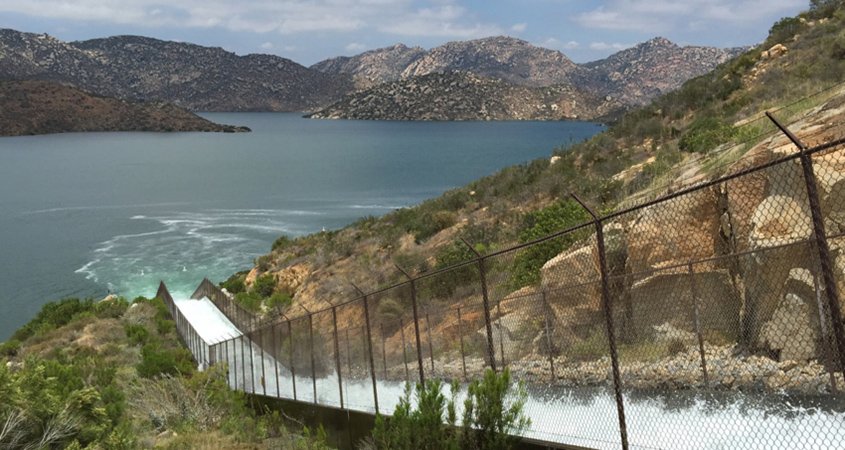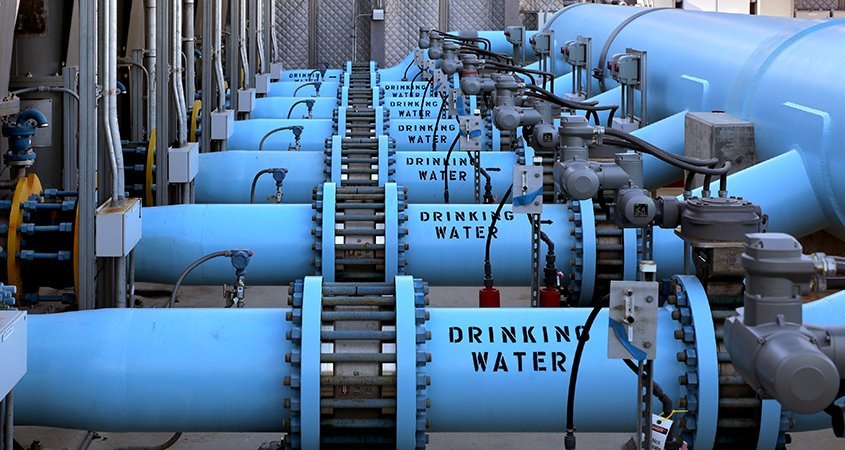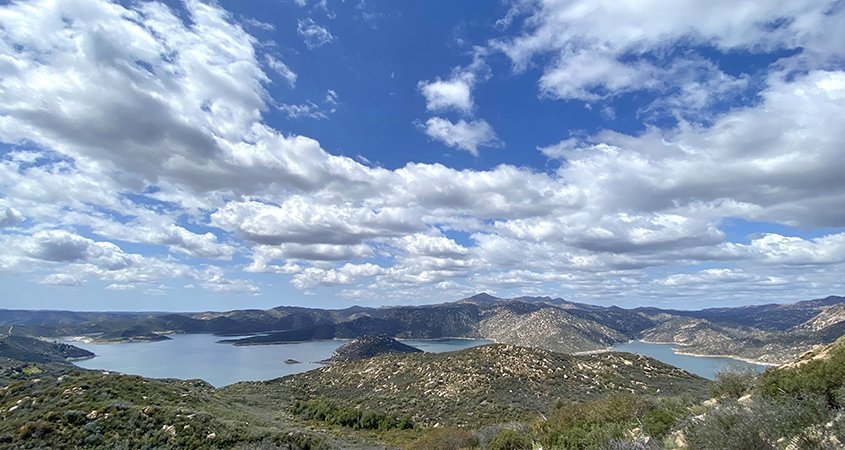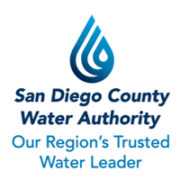The San Diego County Water Authority’s Board of Directors today adopted a $1.7 billion budget for fiscal years 2022 and 2023 – a 0% change from the current two-year budget – and approved water rates and charges for 2022, following a public hearing.
The all-in rate, which is a blend of fixed and variable rates, will rise by 3.6% for treated water and 3.3% for untreated water in calendar year 2022, due to more rate increases by the Los Angeles-based Metropolitan Water District of Southern California, continued payments for past investments in supply reliability, and inflationary pressures on energy, chemicals, and construction materials. Actual water bills will vary based on customers’ water use, along with factors unique to their local retail water agencies.
 “I’m proud of this budget and rates package in an era of unprecedented challenges,” said Water Authority Board Chair Gary Croucher. “We have contained costs while benefitting from strategic investments in water supply reliability that protect the region’s $253 billion economy and 3.3 million residents from statewide drought conditions. This achievement is only possible due to collaboration with our member agencies, strategic guidance from the Board, and the dedication of agency staff.”
“I’m proud of this budget and rates package in an era of unprecedented challenges,” said Water Authority Board Chair Gary Croucher. “We have contained costs while benefitting from strategic investments in water supply reliability that protect the region’s $253 billion economy and 3.3 million residents from statewide drought conditions. This achievement is only possible due to collaboration with our member agencies, strategic guidance from the Board, and the dedication of agency staff.”
More than 90% of the two-year budget is for buying and treating water or building and financing infrastructure. Seven percent of the budget for Fiscal Years 2022 and 2023 funds the Water Authority’s operating departments. The budget increase for those departments is 2%, or $1.9 million, compared to the current two-year budget.

The San Diego County Water Authority Board of Directors May 27 approved the Water Authority’s 2020 Urban Water Management Plan highlighting a “water portfolio approach” that ensures reliable water supplies for the region through the 2045 planning horizon – even during multiple dry years. Photo: San Diego County Water Authority
Key initiatives during next two-year budget cycle
- Long-term planning – The Water Authority’s Long-Range Financing Plan and the Water Facilities Master Plan will be prioritized. Both are critical documents for projecting the Water Authority’s financial future and providing the Board with flexibility. Phase B of the Regional Conveyance System Study will conclude, and the Board will determine whether to proceed. Another focus is developing water storage capacity in Lake Mead to provide additional drought resilience for San Diego County and other parts of the Colorado River Basin.
- Controlling costs – The budget includes the elimination of seven staff positions, along with a reduction in outside services and minimizing travel. In addition, equipment replacement was evaluated for deferrals, minimizing the budget impact of day-to-day operations. As always, the budget is partly the function of water sales and water rates, which are both trending upward.
- Capital improvements – The Water Authority’s Capital Improvement Program is the cornerstone of the agency’s efforts to ensure that regional water delivery and treatment systems continue to meet a variety of ever-changing demands. The agency will move forward on the highest-priority asset management projects, along with detailed seismic, hydraulic and cavitation analysis. Staff also will continue to enhance security systems for physical and cyber assets – a responsibility that grows as potential threats continue to expand.
- Collaborating with member agencies – Water Authority staff in every department work closely with member agencies to support local efforts, from outreach and advocacy to budget and rate development – and those efforts will continue to be a priority. There are opportunities for collaboration both in joint projects and joint policy issues, such as advocating for local decision-making about drought investments and responses.
- Communicating with stakeholders – Whether it be in the state Capitol or local chambers of commerce, the Water Authority will continue to share the region’s water story through a full range of engagement tools and creative tactics.
Although the Water Authority’s budget spans two fiscal years, the agency sets rates annually to manage changing conditions more effectively. The Water Authority developed its 2022 water rates in conjunction with an independent cost-of-service study to ensure rates and charges comply with state law, legal requirements, cost-of-service standards, and Board policies.

The San Diego region’s diversified water supply portfolio includes highly reliable, locally controlled and drought-proof supplies from the Claude “Bud” Lewis Carlsbad Desalination Plant. Photo: San Diego County Water Authority
Collaboration with member agencies
The Water Authority also worked closely with its member agencies to keep the proposed rates and charges at the low end of earlier projections.
In 2022, the Water Authority will charge its 24 member agencies an all-in rate of $1,523 per acre-foot for untreated water, or $49 more per acre-foot than they currently pay. Charges would be $1,833 per acre-foot for treated water, or $64 more per acre-foot than in 2021. (Note: An acre-foot is about 325,900 gallons, enough to serve the annual needs of 2.5 typical four-person households in San Diego County.)
The Water Authority’s overall rate increase is driven by multiple factors, including rising costs from its wholesale water provider, MWD. MWD increased its rates, including the amount it charges to transport the Water Authority’s lowest cost regional supply – high-priority, independent supplies from the Colorado River. Overall, MWD’s rates and charges for the Water Authority in 2022 will increase 3.9%.

The San Diego County Water Authority said June 21, that the region is protected from drought impacts this summer, and through 2045, despite continued hot and dry conditions. Photo: San Vicente Reservoir/San Diego County Water Authority
Strategic management
The water rates for calendar year 2022 include strategic withdrawals from the Rate Stabilization Fund. To reduce 2022 rate increases by approximately $65 per acre-foot, the Water Authority plans to draw $25 million from the agency’s Rate Stabilization Fund. The fund was created in 1990 to help avoid rate spikes, especially those driven by reduced water sales. The rate proposal also includes strategic management of the Water Authority debt portfolio resulting in $130 million in net present value savings from several refundings.
The 2022 rates ensure debt-coverage ratios that maintain the Water Authority’s strong credit ratings and minimize the cost of borrowing money for construction projects, an approach that saves ratepayers money over the long run. The Water Authority has senior lien credit ratings of AAA from Standard & Poor’s, AA+ from Fitch ratings and Aa2 from Moody’s.
For more information about the Water Authority’s 2022 and 2023 budget, and 2022 rates, go to pages 58 and 69 in the June Board packet.







